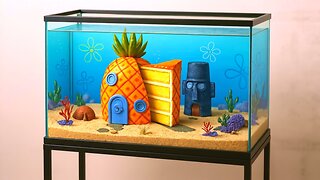Premium Only Content

Amazing Born Chicks Hen Harvesting Eggs To Chicks
Egg Collection: Eggs intended for hatching are collected from healthy, well-fed, and properly managed breeding chickens. These eggs need to be clean and free from cracks or deformities.
Storage: If the eggs are not immediately placed in an incubator, they should be stored properly. The ideal conditions for egg storage include a temperature of around 50-60°F (10-15°C) and a humidity level of 70% to maintain their viability. Eggs should be stored with the pointed end down and rotated regularly to prevent the yolk from sticking to the shell.
Incubation: Incubation is the process of simulating the conditions necessary for eggs to hatch. It involves maintaining a controlled environment with consistent temperature, humidity, and turning the eggs regularly. Modern incubators automate these conditions. The optimal temperature for chicken egg incubation is around 99.5°F (37.5°C), with a humidity level of 50-55%. Turning the eggs several times a day helps prevent the embryo from sticking to the shell and allows proper development.
Candling: After a few days of incubation (usually around day 7), candling is performed. Candling involves shining a bright light through the egg to observe the embryo's development, identifying any unfertilized or nonviable eggs. Unviable eggs are removed from the incubator to prevent contamination.
Hatching: The incubation period for chicken eggs is typically around 21 days. As the chicks develop, they will start to peck through the shell using their egg tooth. This process can take several hours or even a day. It's crucial not to interfere during this stage, as the chicks need time to emerge on their own.
Brooding: Once the chicks have hatched, they need a warm and safe environment to thrive. A brooder, which provides warmth, protection, water, and chick feed, is essential. The temperature should be kept around 95°F (35°C) for the first week and then gradually decreased by 5°F (2-3°C) each week until they are fully feathered and can maintain their body temperature.
-
 2:10:50
2:10:50
vivafrei
6 hours agoEp. 274: Canada's War on Christianity! Is Candace Owens Cooked? SCOTUS, RFK Jr. AND MORE!
49.6K69 -
 38:09
38:09
The Mel K Show
3 hours agoMel K & Tim James | Are Hidden Dangers Lurking in Your Mouth? | 7-27-25
14.1K2 -
 LIVE
LIVE
PudgeTV
1 day ago🟠 Gaming on Rumble | Soulframe Early Access Gaming Showcase
118 watching -
 LIVE
LIVE
ttvglamourx
4 hours ago $0.55 earnedSearching To Destroy !DISCORD
169 watching -
 LIVE
LIVE
itsReel
2 hours agoGaming SUNDAY
34 watching -
 28:43
28:43
Liberty Hangout
3 days agoAnti-Trumpers Don't Know What They're Protesting
39.6K221 -
 20:33
20:33
Sideserf Cake Studio
1 day ago $3.73 earnedI Built A Bikini Bottom Fish Tank CAKE!
33.8K11 -
 LIVE
LIVE
Gore TV
1 hour agoNO LOOT?! Fine 😤 I’ll Build My Own Gun! 🔫🪵✨
131 watching -
 LIVE
LIVE
XxXAztecwarrior
2 hours agoPlaying Normals Big Red Hunting Delta Force
190 watching -
 2:22:46
2:22:46
The Connect: With Johnny Mitchell
1 day ago $14.05 earnedOne Man's Mission To Stop Human Trafficking: How A Billionaire Mercenary Saved Hundreds Of Children
45.2K33